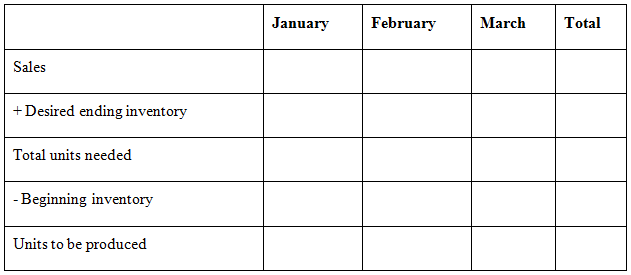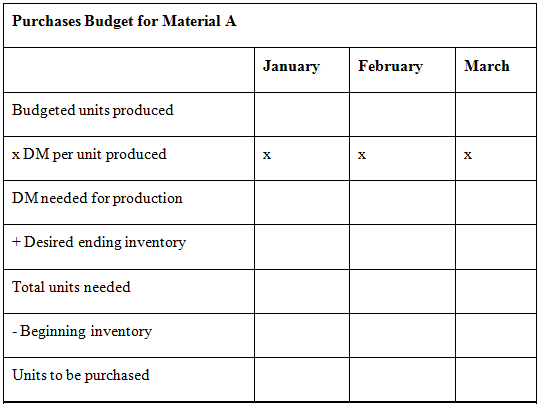Question
The sale budget is created first and includes the number of units expected to be sold of each product times the expected price. In this
The sale budget is created first and includes the number of units expected to be sold of each product times the expected price. In this way, total sales revenue, which will feed into the budgeted income statement, is budgeted.
Example: Ellsworth Company sells two products, Product A and Product B. Next year, Ellsworth expects to sell 2,500 units of Product A at $5 each and 10,000 of Product B at $4 each. Here is a sales budget for Ellsworth Company.

The next budget to be developed is the production budget. This budget is based on units only - not dollars. The production budget requires the budgeted unit sales, the desired ending inventory units, and the beginning inventory units. Suppose a company expected monthly sales in the first quarter of 10,000, 12,000, and 13,000 units. Expected April sales are 13,500. The company policy is to have 10% of the next month's sales in ending inventory; it started the quarter with 1,600 units in inventory. The quarter's production budget would be the following:

The desired ending inventory for February is equal to ten percent of March sales. The desired ending inventory for the total column for the first quarter is equal to the ending inventory for March. How many production budgets are prepared? As many production budgets as there are separate products.
The direct materials purchases budgets can be prepared after the production budgets are complete. There are as many direct materials purchases budgets as there are types of different direct materials used in production. The purchases budget requires the budgeted production in units, the desired ending inventory of direct materials in units, and the beginning inventory in units. Suppose a company expected monthly production in the first quarter of 9,600 units, 12,100 units, and 13,050 units. Each unit takes 2 pounds of Material A and 3 pounds of Material B. Company policy is that sufficient raw materials should be in ending inventory to satisfy 20% of the next month's production needs. Beginning inventory for each material satisfied that requirement (3,840 pounds of Material A and 5,760 pounds of Material B). The direct materials purchases budgets for January and February are as follows:


Units x Price Sales Revenue Product A 2,500 x $5 $12,500 Product B 10,000 x $4 $40,000 Total 12,500 x $4.20 $52,500 Sales + Desired ending inventory Total units needed - Beginning inventory Units to be produced January February March Total Purchases Budget for Material A Budgeted units produced x DM per unit produced DM needed for production + Desired ending inventory Total units needed - Beginning inventory Units to be purchased January X February March X Purchases Budget for Material B Budgeted units produced x DM per unit produced DM needed for production + Desired ending inventory Total units needed - Beginning inventory Units to be purchased January X February March X
Step by Step Solution
3.39 Rating (158 Votes )
There are 3 Steps involved in it
Step: 1

Get Instant Access to Expert-Tailored Solutions
See step-by-step solutions with expert insights and AI powered tools for academic success
Step: 2

Step: 3

Ace Your Homework with AI
Get the answers you need in no time with our AI-driven, step-by-step assistance
Get Started


